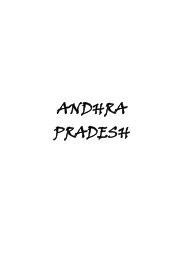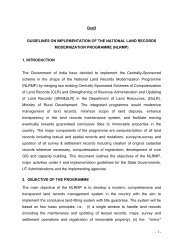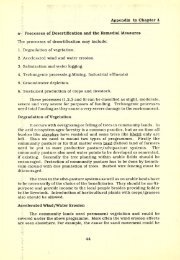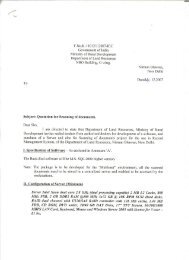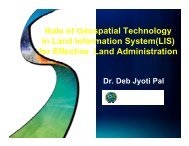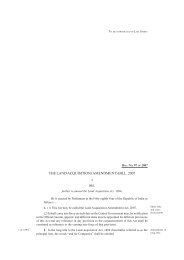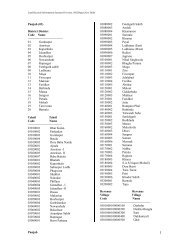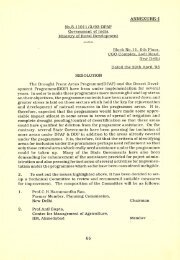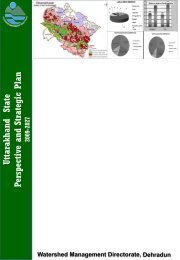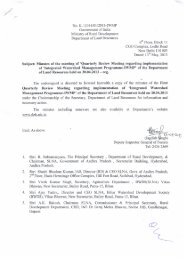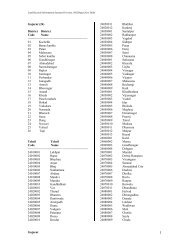Table 2 - Department of Land Resources
Table 2 - Department of Land Resources
Table 2 - Department of Land Resources
You also want an ePaper? Increase the reach of your titles
YUMPU automatically turns print PDFs into web optimized ePapers that Google loves.
Quality Assurance <strong>of</strong> digitized Maps: The digitized data <strong>of</strong> each feature is<br />
assigned along with appropriate feature code and symbols, finally leading to the<br />
arrangement <strong>of</strong> data as per layering scheme. Next step is to classify the line, point<br />
and polygon features. Then create the polygons and edit the problems like<br />
undershoot / overshoot and duplicate lines etc. Manual checking is done by the<br />
revenue staff ensuring matching <strong>of</strong> each and every plot. Corrections are done by<br />
following the required quality standards.<br />
After completing all the checks, final printout <strong>of</strong> the digitized maps are taken and<br />
in the process <strong>of</strong> map composition, a standard template is created wherein<br />
different layers such as point, text, line, area etc are used. The final composition<br />
is done from a particular layer including various non-map features as letter boxes,<br />
railway lines etc.<br />
The final output map is the completely composed map, which is identical to the<br />
original map and the plot numbers are printed over them.<br />
The individual vectorized sheets are converted into shape file (.shp) format, which<br />
is used for integration with the Records-<strong>of</strong>-Rights.<br />
4. Integration Of HALRIS With Digitized Cadastral Maps<br />
To integrate the digitized maps with the mutation process <strong>of</strong> HALRIS, so that maps can<br />
be updated automatically, Bhu-Naksha s<strong>of</strong>tware, which is based on open source<br />
GeoTools developed by NIC was studied for its replication and customization as per<br />
Haryana requirements. The primary objective was to create the database <strong>of</strong> cadastral<br />
maps in digitized form and linking the same into the existing HARLIS s<strong>of</strong>tware,<br />
facilitating display, updating and printing <strong>of</strong> the cadastral maps. The Bhu-Naksha system<br />
provide following functionalities:<br />
a) The system imports the digitized and verified cadastral vector data to the spatial<br />
database. The system has the provision <strong>of</strong> importing geo-referenced spatial data.<br />
b) The s<strong>of</strong>tware displays the complete cadastral map or single plot /multiple plots<br />
along with appropriate scale and north direction. The system displays the linear<br />
dimensions <strong>of</strong> plot boundaries. There is a provision to overlay other layers like<br />
canal layer, road layer etc.<br />
c) The standard symbols (alamaths) can be attached wherever required.<br />
d) The s<strong>of</strong>tware allows the user to split the plots in to multiple parts as per the<br />
mutation process. It further assigns new plot numbers to divided parcels. The<br />
system also has the provision to merge plots.<br />
e) On selection <strong>of</strong> the Khasra (land plot) number, system shows the cadastral map<br />
along with the neighboring plots. It also shows the names <strong>of</strong> the owners <strong>of</strong> the plot.<br />
The system converts the output to print friendly version / pdf for citizen services.<br />
f) S<strong>of</strong>tware can provide spatial outputs based on queries on plots, ownership,<br />
government land, forest areas, and crop type as per the textual data availability.<br />
NIC,Deity,MCIT,GOI DOLR,MORD,GOI 33




